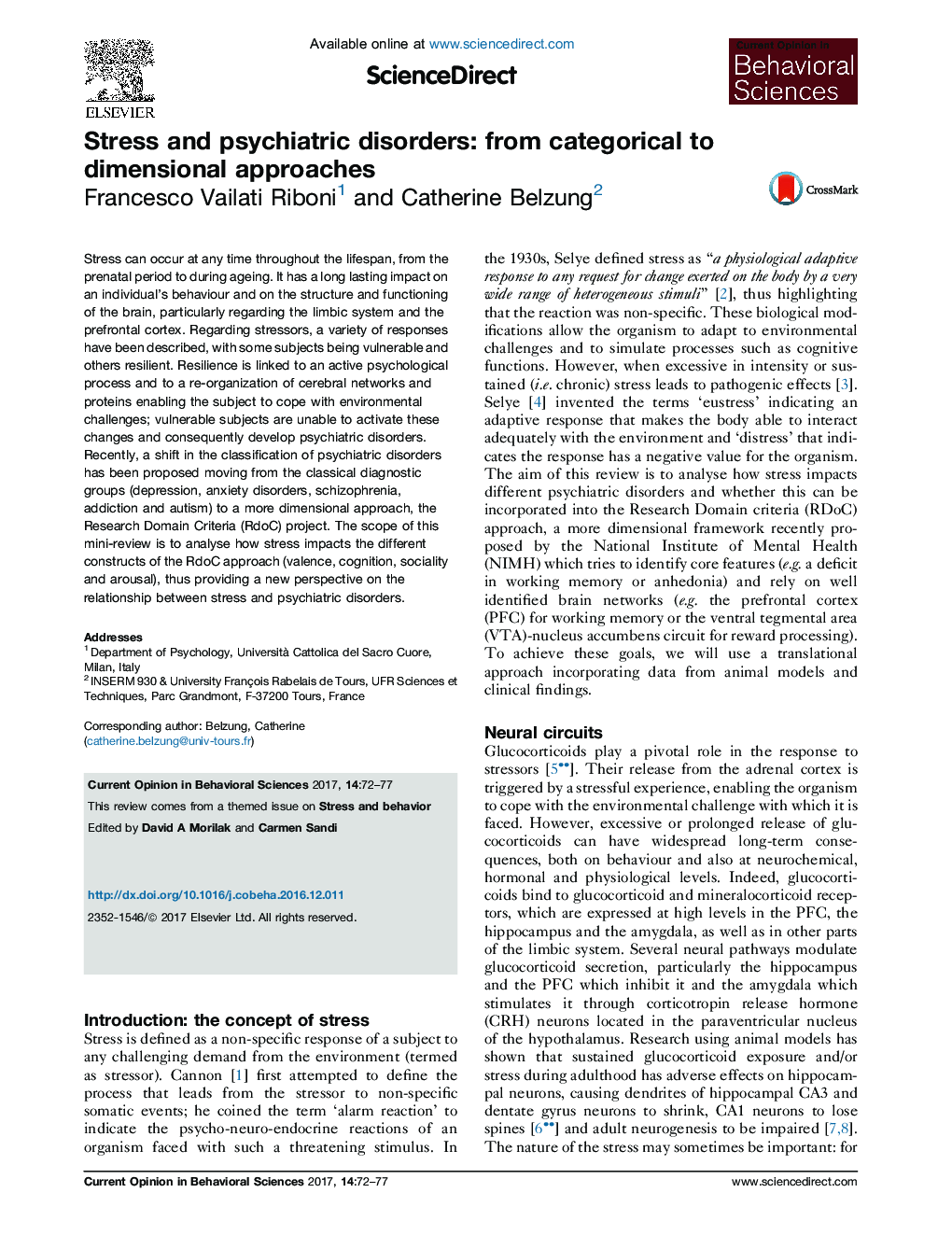| Article ID | Journal | Published Year | Pages | File Type |
|---|---|---|---|---|
| 5735904 | Current Opinion in Behavioral Sciences | 2017 | 6 Pages |
Abstract
Stress can occur at any time throughout the lifespan, from the prenatal period to during ageing. It has a long lasting impact on an individual's behaviour and on the structure and functioning of the brain, particularly regarding the limbic system and the prefrontal cortex. Regarding stressors, a variety of responses have been described, with some subjects being vulnerable and others resilient. Resilience is linked to an active psychological process and to a re-organization of cerebral networks and proteins enabling the subject to cope with environmental challenges; vulnerable subjects are unable to activate these changes and consequently develop psychiatric disorders. Recently, a shift in the classification of psychiatric disorders has been proposed moving from the classical diagnostic groups (depression, anxiety disorders, schizophrenia, addiction and autism) to a more dimensional approach, the Research Domain Criteria (RdoC) project. The scope of this mini-review is to analyse how stress impacts the different constructs of the RdoC approach (valence, cognition, sociality and arousal), thus providing a new perspective on the relationship between stress and psychiatric disorders.
Related Topics
Life Sciences
Neuroscience
Behavioral Neuroscience
Authors
Francesco Vailati Riboni, Catherine Belzung,
